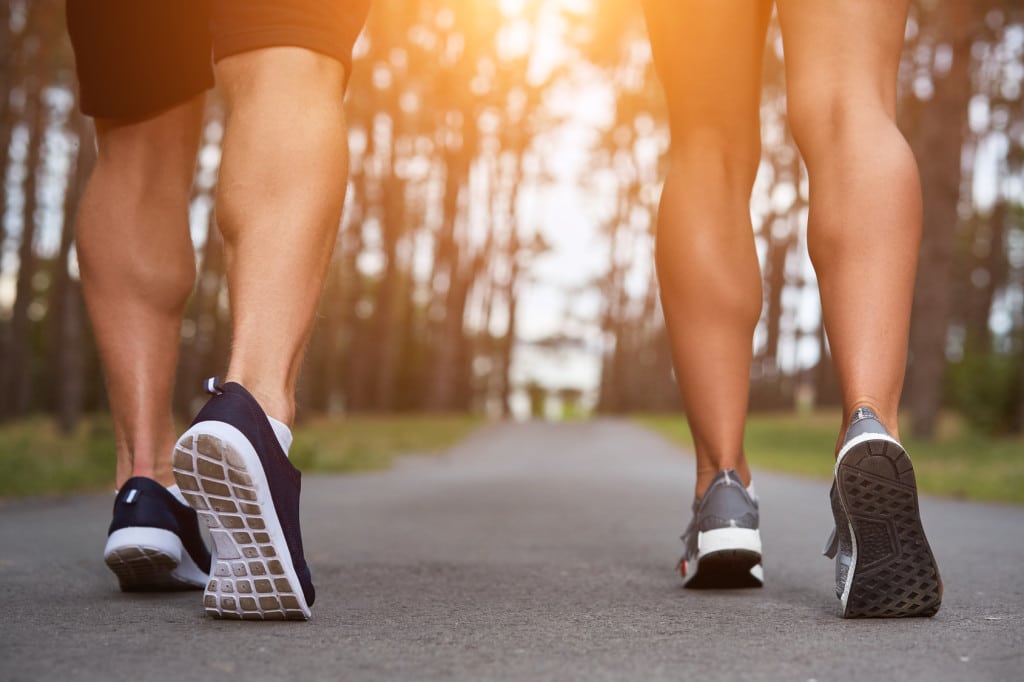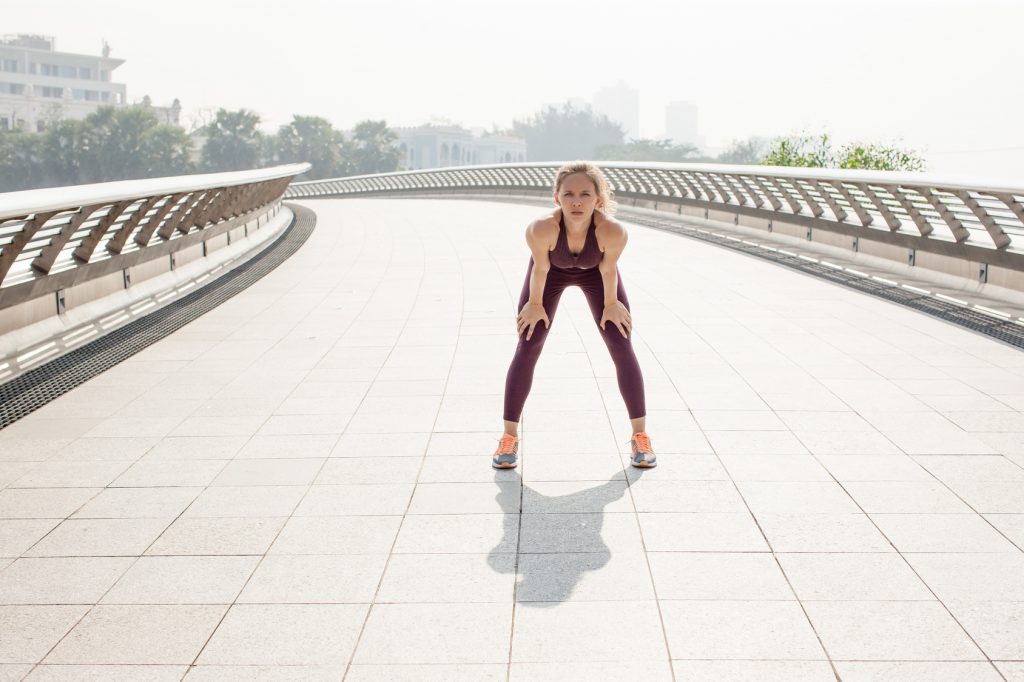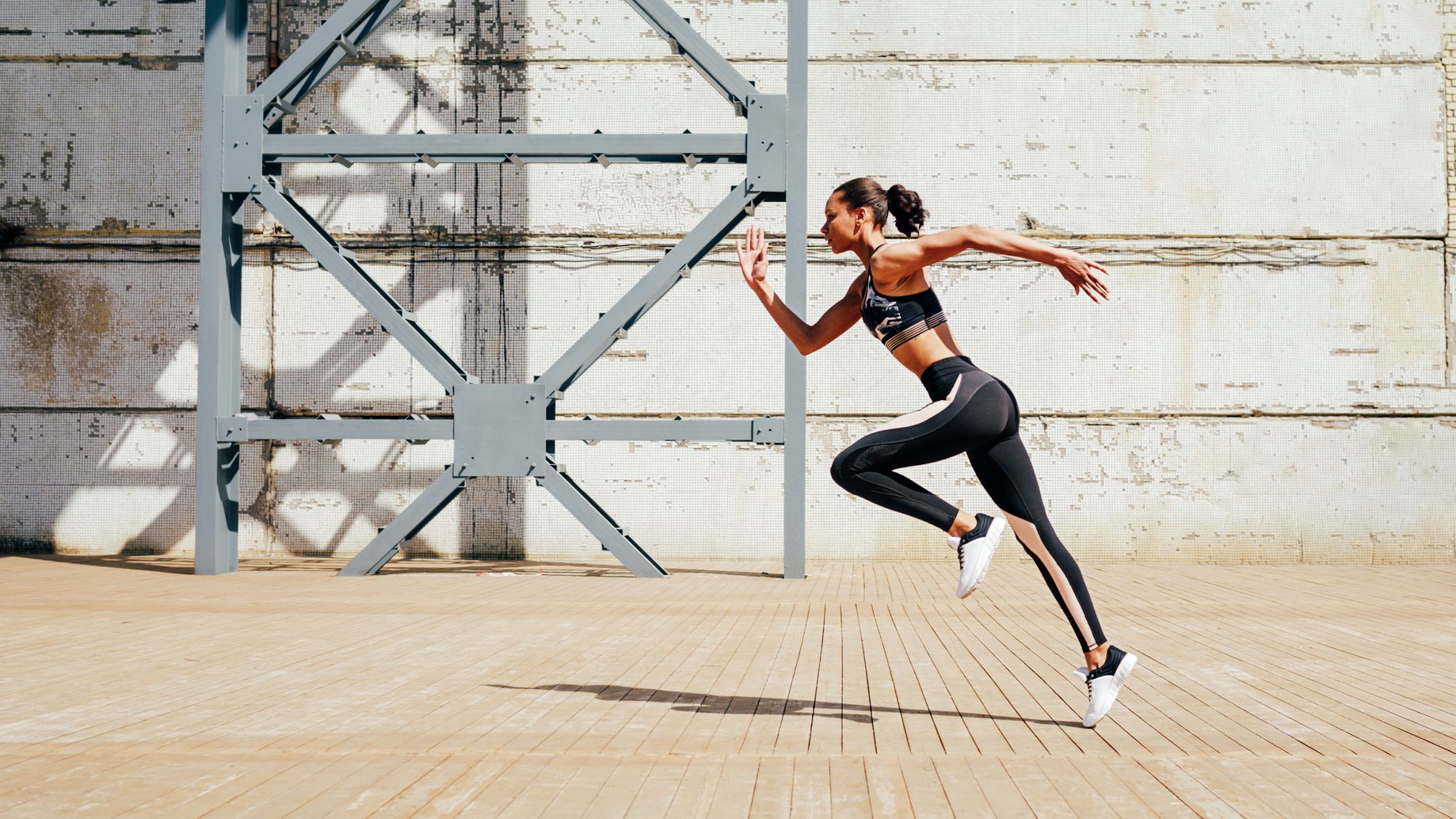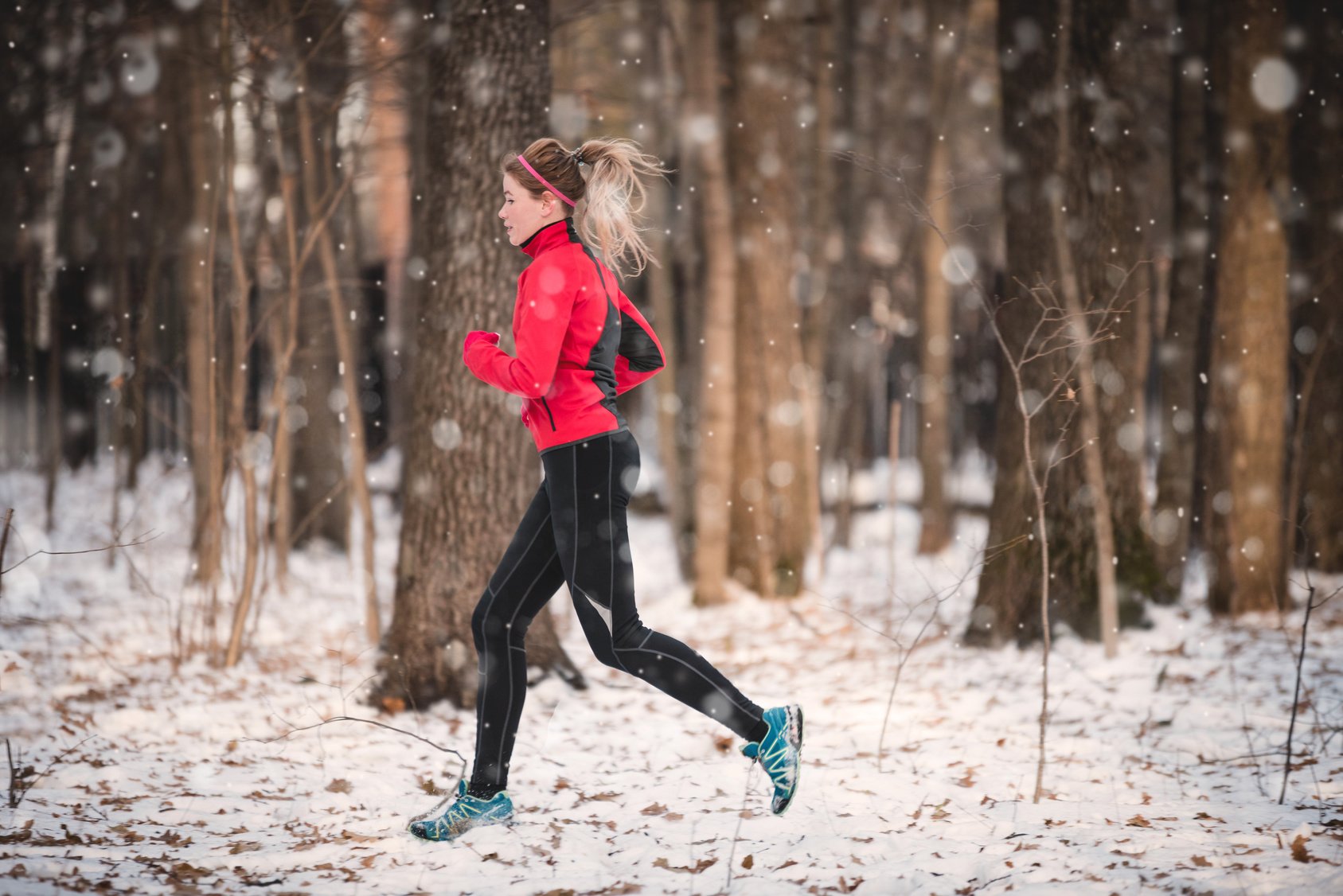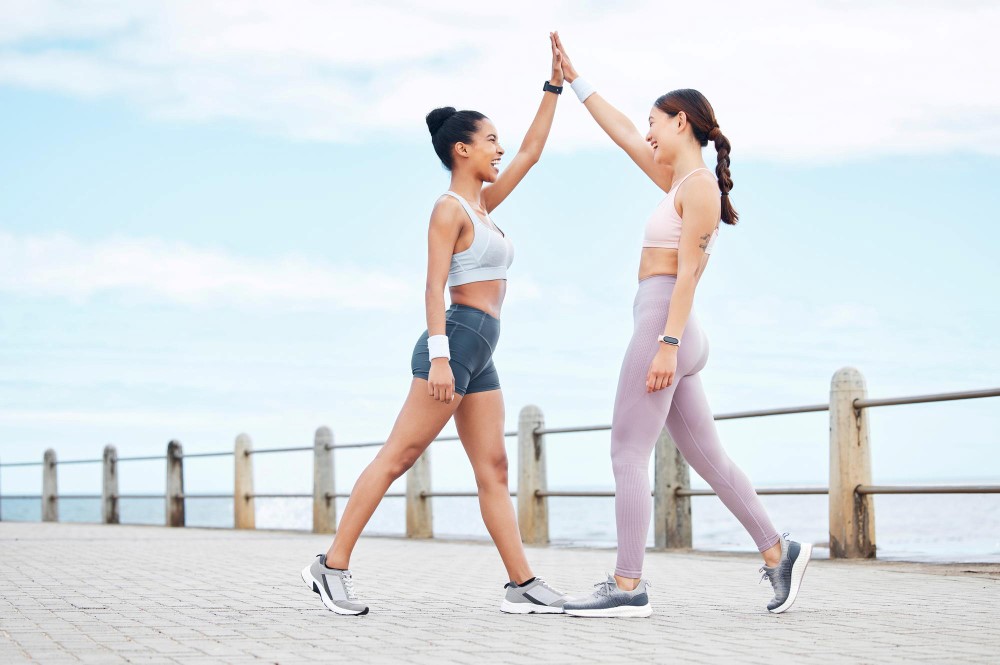Are you ready to level up your running game with the secret ingredient to success? Buckle up, because we’re about to dive into the world of micronutrients, the unsung heroes of nutrition!
As runners, we know that a well-balanced and nutritious diet is essential for maximizing our recovery and performance. But did you know that micronutrients, found in vitamins and minerals, play a critical role in our bodies’ optimal functioning? They may be tiny, but their impact is enormous.
Think of micronutrients as the conductors of a biochemical orchestra, ensuring every aspect of our body functions harmoniously. From protein production to hormone regulation and enzyme action, they are the driving force behind our daily performance—both on and off the running field.
Here’s the deal: when you’re running regularly, your body’s micronutrient reserves can take a hit, especially if you’re not following a well-balanced diet or pushing yourself too hard. That’s why I’m to guide you through the top 10 essential micronutrients that can take your running to the next level.
No need for flashy capes or masks; all you need is a plate full of nutrient-rich foods to power your running journey.
So, let’s explore these essential micronutrients and discover the best food sources to fuel your body like never before.
Get The Micros From Your Diet
Picture this: your body is like a high-performance sports car, and the fuel you put in it determines how well it runs. You wouldn’t fill up a Lamborghini with cheap, low-quality gas, would you? Of course not! The same goes for your body.
To unleash your inner running beast, you need the best possible nutrition – and that means getting your vitamins and minerals straight from nature’s buffet. Say goodbye to processed junk and salty temptations. Instead, dive headfirst into a world of mouthwatering vegetables, lean meats, hearty whole grains, legumes that pack a punch, and an abundance of colorful fruits that will make your taste buds dance.
Sure, you might be tempted by those shiny bottles promising an instant micronutrient fix. But let me tell you a secret – there’s no shortcut to true vitality and performance. Bottled supplements can lend a helping hand, but they’ll never replace the power of a well-rounded diet.
Now, here’s the trick – you need just the right amount of these nutritional superheroes. Think of it as Goldilocks and her quest for the perfect porridge – not too little, not too much, but just right. Striking this balance is what leads to the magic sweet spot of optimal health and running prowess.
Let’s get to it.
Vitamin C
Ah, Vitamin C, the superhero of the micronutrient world! It’s like the handyman your body calls upon for all things maintenance. Imagine it with a little toolbelt, going around, keeping your capillaries, bones, and teeth in tiptop shape.
But wait, there’s more! This mighty vitamin is like a shield against the pesky invaders trying to crash the party. Yup, it’s your body’s bodyguard, fending off those nasty upper respiratory tract infections that could put a damper on your long-distance running adventures.
And that’s not all – Vitamin C has some serious ninja moves too. When you’re out there running and generating all those free radicals, it swoops in like a ninja warrior to neutralize them, sparing you from delayed onset muscle soreness. No need to suffer the post-run aches and pains when Vitamin C is on your side!
But wait, there’s still more to this incredible nutrient. It’s like a traffic controller, directing iron to where it needs to go, especially from non-meat sources. This is crucial for reducing the risks of anemia, ensuring your energy levels stay sky-high for those epic runs.
And here’s the grand finale – Vitamin C is the master builder of collagen, the raw material your body needs to construct the very foundation of your muscles, blood vessels, cartilage, and bones. It’s like the architect and engineer of your body, ensuring everything stays strong, flexible, and resilient. To further support collagen production, many people turn to collagen powder as a convenient way to boost their intake and promote overall health.
Best sources include bell pepper, guava, orange, kiwi, strawberries, grapefruit, papaya, broccoli, cauliflower, cantaloupe, pineapple, and kale.
How much? 90 to 100 milligrams/day for men; 70 to 80 milligrams/day for women.
How to get it?
- ½ cup of guava= 190 milligrams
- ½ cup of raw red sweet pepper = 100 milligrams
- One cup of grapefruit juice = 85 milligrams
- One medium kiwi = 70 milligrams
- One medium orange = 70 milligrams
- One medium kiwifruit = 64 milligrams
- ½ cup of raw green pepper = 60 milligrams
- ½ cup of strawberries = 50 milligrams
- ½ cup of cooked broccoli = 50 milligrams
- ½ cup of fresh strawberries = 50 milligrams
- ½ cup of Brussels sprouts = 50 milligrams
- ¼ medium papaya= 47 milligrams
- ½ cup of raw broccoli = 40 milligrams
- ½ cups of broccoli = 38 milligrams
- ¾ cup of tomato juice = 33 micrograms
- ½ cauliflower = 30 milligrams
- ½ cup of pineapple = 28 milligrams
- ½ cup of mango = 23 milligrams
Vitamin D
Ah, Vitamin D, the sunshine vitamin – it’s like a tag team partner for calcium, ensuring your bones stay strong and unbreakable.
But beware, my fellow runners, a deficiency in this dynamic duo could spell trouble. Imagine your performance taking a nosedive due to increased risks of stress fractures and chronic inflammation. It’s like a villain sneaking into your body, sabotaging your hard-earned progress!
But fear not, there’s a way to summon the power of Vitamin D and boost your energy reserves. Research from The Newcastle University has unveiled its secret weapon – the ability to rejuvenate your muscles’ mitochondria, the powerhouse that fuels your every move. Talk about an energy recharge for your muscles!
And here’s a fascinating tidbit – Vitamin D is like a mood-enhancing elixir. Subjects in the study reported feeling less fatigue after a dose of this superhero nutrient. It’s like a burst of sunshine in a bottle, lifting your spirits and fueling your motivation to conquer any running challenge.
But wait, there’s a plot twist – if you’re in the dark, quite literally, with dark-colored skin, protective clothing, or limited sunshine exposure, it’s time to take action. Get your Vitamin D levels checked, just like a secret agent investigating the enemy’s stronghold. And, of course, consult a certified physician for the ultimate strategy against a deficiency.
Now, let’s talk about its best sources. While a well-rounded diet is good, it might not be enough for this superstar vitamin. The real magic happens outdoors – yes, under the bright rays of the sun! Vitamin D is produced when your skin meets the sun, like a spell of enchantment.
And here’s a tip from the experts – a quick 10 to 15 minutes in the midday sun, dressed in a tank top and shorts (sans sunscreen), can provide you with a burst of around 10,000 international units of this magical vitamin. It’s like a power-up to invincibility!
But don’t worry if you prefer other sources. You can still call upon dairy, irradiated mushrooms, fatty fish, and fortified foods like milk and orange juice to keep the Vitamin D army strong.
How Much? 2000 to 3000 International Units (IU) per day for both men and women.
How to get it?
- One tablespoon of cod liver oil = 1300 IU
- 3 ounces of swordfish = 550 IU
- 3 ounces of salmon = 450 IU
- 3 ounces of canned tuna = 150 IU
- One cup of orange juice fortified with Vitamin D = 140 IU
- One cup of nonfat, whole, and vitamin D-fortified milk = 120 IU.
- 8 ounces of fortified milk = 100 IU
- 8 ounces of fortified orange juice = 100 IU
- 4 ounces of fortified yogurt = 60 IU
- One tablespoon of Fortified Margarine = 60 IU
- 3 ounces of cooked liver beef = 42 IU
- One cup of fortified cereal = 40 IU
- 3 ounces of Swiss cheese = 18 IU
Vitamin A
Ah, Vitamin A – the superhero of vitamins, swooping in to save the day and keep your body in top-notch condition! This fat-soluble powerhouse wears many hats, performing a spectacular juggling act of vital functions that make it an essential part of your running team.
First and foremost, Vitamin A is like the architect of growth, ensuring that your body’s construction crew builds you up strong and tall, just like a magnificent skyscraper reaching for the sky. And let’s not forget its secret weapon – the immune system booster! With Vitamin A on guard, your body’s defenses are like an impenetrable fortress, protecting you from any unwanted invaders.
But wait, here comes the most dazzling feat – improved vision! Vitamin A is like a masterful magician, conjuring up crystal-clear eyesight and sharpening your focus like a camera lens, making sure you never miss a step on your running journey.
And that’s not all – brace yourself for the grand finale! Vitamin A is your trusty antioxidant ally, defending your body’s cells from the ruthless villains known as free radicals. Picture it like a fierce battle between good and evil, with Vitamin A shielding your cells from harm’s way, like an invincible shield.
Now, here’s a fun fact that adds a touch of trivia to our Vitamin A saga – it was the very first vitamin to be discovered! With such a prestigious title, it’s no wonder Vitamin A gets the prime spot with the first letter of the alphabet, proudly leading the way for other vitamins to follow..
Best sources: Sweet potato, carrots, pumpkin, squash, green leafy vegetables, bell pepper, eggs, beef, and peaches.
How much? 900 to 1000 micrograms daily for men and 700 to 800 micrograms daily for women.
How to get it?
- 2 ounces of beef liver = 4000 micrograms
- One medium sweet potatoes = 1000 micrograms
- ½ cup pumpkin = 950 micrograms
- ½ cup of carrots = 680 micrograms
- ½ cup of spinach= 570 micrograms
- ½ cup turnip greens = 450 micrograms
- One cup of ricotta cheese = 270 micrograms.
- 3 ounces of Atlantic herring = 220 micrograms
- One cup of, fat-free or skim, milk = 150 micrograms
- ½ cup of raw cantaloupe = 140 micrograms
- ½ cup of sweet, red, peppers = 120 micrograms
- One medium mango = 112 micrograms
Vitamin E
Ah, the enigmatic Vitamin E, a true master of disguise with its many faces! This vitamin isn’t just a one-trick pony; it’s like a magician with a bag of eight different tricks up its sleeve. Meet the dynamic duo of tocotrienols and tocopherols, each with their own unique flair and superpowers, coming together to form the Vitamin E dream team!
Now, let me tell you a secret – Vitamin E is not just any regular antioxidant; it’s like a fortress protecting your body’s precious cells. Like a vigilant guardian, it stands tall against the ruthless enemies known as free radicals, ensuring they don’t breach your body’s defenses and cause mayhem. Picture it as a shield, keeping your cell membranes intact and strong, like a formidable fortress wall that nothing can penetrate.
And here’s the twist – Vitamin E is a true friend of your immune system, like a superhero sidekick, always ready to lend a helping hand. With its remarkable powers, it fortifies your immune troops, gearing them up for battle against bacteria and viruses. So, even if you’re pushing the limits with intense running, fear not! Vitamin E has your back, reducing the chances of getting sick and keeping you in the running game.
But hold on tight, because I’ve got some exciting news for you! A groundbreaking research revelation straight from the Journal of Clinical Epidemiology! In fact, adequate intake of Vitamin E can slash the risk of pneumonia by a staggering 69 percent among non-smokers who exercise. That’s like having a secret weapon to fend off pneumonia, ensuring you stay in top form for all your running escapades.
How Much? 12 to 16 mg a day for both men and women.
Best sources: Almonds, sunflower seeds, olive oil, peanut butter.
How to get it:
- One tablespoon of wheat germ oil = 20 milligrams
- One ounce of dry roasted sunflower seeds = 8 milligrams
- One ounce of sunflower seeds = 7.4 milligrams
- One ounce of almonds = 7.3 milligrams
- One ounce of dry roasted almonds = 6.8 milligrams
- One tablespoon of sunflower oil = 5.6 milligrams
- One ounce of hazelnuts =4.3 milligrams
- One ounce of dry roasted hazelnuts = 4.3 milligrams
- One medium avocado = 4.2 milligrams
- One ounce of pine nuts = 2.6 milligrams
- Two tablespoons of peanut butter = 2.5 milligrams
- ½ cup of tomato sauce = 2.5 milligrams
- One tablespoon of corn oil = 2 milligrams
- ½ cup of spinach = 1.9 milligrams
Calcium
Picture your bones as the foundation of a mighty fortress, and calcium is the crucial cement holding it all together. When you’re out there pounding the pavement, running with all your might, you need those bones to be as sturdy as ever.
Now, brace yourself for a jaw-dropping discovery straight from the American Academy of Physical Medicine and Rehabilitation! Consuming an extra cup of calcium-rich skim milk each day can work wonders, reducing the risk of stress fractures in us runners by a whopping 60 percent.
That’s like having an invisible shield protecting your bones from the perils of high-impact running.
But here’s the thing – your bones aren’t just idle bystanders; they’re smart, proactive defenders of calcium. When your blood supply runs low on this vital mineral, your bones step up like brave knights in shining armor, lending their precious calcium reserves to the cause.
But here’s the downside. When your diet falls short on calcium, it’s like a debt left unpaid. Those borrowed calcium soldiers never make their way back home, leading to a gradual decline in bone strength, and that’s when trouble starts brewing.
Now, let’s talk about calcium’s versatile talents. Not only does it fortify your bones, but it’s also a backstage magician, aiding in proper blood clotting – a lifesaver for those occasional mishaps during your running adventures. And let’s not forget its role in muscle contraction – like a conductor orchestrating a beautiful symphony, calcium ensures your muscles play their part in perfect harmony.
Best Sources: Milk, yogurt, cheese, canned salmon, beans, dark leafy greens, and some fortified cereals.
How Much? Research recommends getting at least 900 to 1,200 mg of calcium per day for active people.
How to get it?
- 8 ounces of low-fat yogurt = 415 milligrams
- 2 ounces of part skim Mozzarella = 400 milligrams
- 8 ounces of low-fat, yogurt fruit = 360 milligrams
- 3 ounces of, canned in oil, sardines = 320 milligrams
- 8 ounces of calcium-fortified orange juice = 320 milligrams
- 8 ounces of non-fat milk = 300 milligrams
- 8 ounces of calcium-fortified soymilk = 300 milligrams
- 8 ounces of whole milk = 275 milligrams
- ½ cup of tofu made with calcium sulfate = 260 milligrams
- 3 ounces of canned salmon = 180 milligrams
- One cup of cottage cheese = 138 milligrams
- ½ cup of turnip greens = 100 milligrams
- One cup of fresh, cooked kale = 95 milligrams
- One cup of raw Chinese cabbage, bok choy = 75 milligrams
- One slice of whole wheat bread = 30 milligrams
Iron
Ah, iron – the unsung hero running through the corridors of our body, ensuring a symphony of vital functions! Picture it as a valiant knight, protecting the kingdom of your cells and organs, working tirelessly to keep you running strong.
Now, let’s unravel the magical role iron plays in our running adventures. Imagine myoglobin and hemoglobin as trusty carriers, like dedicated messengers delivering precious oxygen to your hard-working muscles.
Thanks to iron, these oxygen-carrying compounds ensure a smooth transfer, fueling your muscles like a well-oiled machine.
But beware of iron shortages! When your iron reserves run low, it’s like your messengers suddenly going on strike. The result? Anemia, the menacing villain of the running world.
It leaves your red blood cell count plummeting, dragging you into the abyss of poor recovery, chronic fatigue, and a dismal performance on the track.
Research has uncovered a shocking truth – each hour of pounding the pavement could swipe away 6 to 8 percent of your precious iron levels! That’s like a sneaky thief stealing your stamina bit by bit. No wonder iron deficiencies are common among athletes, especially our fearless female runners who need to be extra vigilant.
But fear not! There are ways to shield yourself from this villainous deficiency. Arm yourself with iron-rich allies like red meat, leafy greens, lentils, and fortified cereals. Embrace a balanced diet, and your iron knight will stand tall, guarding your running kingdom with unwavering loyalty.
Best Sources: Eggs, beef, broccoli, lentils, spinach, dates, raisins, almonds, green leafy vegetables, fortified cereals.
How much? Research suggests that men should shoot for 8 mg of iron a day while women need no less than 16mg.
How to get it?
- One serving of breakfast cereals, fortified with 100% of the DV for iron = 18 milligrams
- 3 ounces of Oysters, cooked with moist heat = 8 milligrams
- One cup of canned white beans = 8 milligrams
- 3 ounces of dark chocolate = 7 milligrams
- 3 ounces of beef liver = 5 milligrams
- ½ cup of boiled and drained lentils = 3 milligrams
- ½ cup of boiled and drained spinach = 3 milligrams
- ½ cup of boiled and drained chickpeas = 2 milligrams
- ½ cup of kidney beans = 2 milligrams
- ½ cup of canned tomatoes = 2 milligrams
- One medium potato = 2 milligrams
Potassium
Potassium is the mighty guardian of the electric kingdom within us! Alongside its trusty sidekick sodium, this duo wields the power of electrolytes, keeping our bodies in perfect harmony and balance. Think of them as the dynamic duo, working hand in hand to ensure your running engine runs like a finely-tuned sports car!
Picture this: as you pound the pavement, pushing your muscles to their limits, potassium swoops in like a superhero, aiding those muscle contractions, and speeding up your recovery. And let’s not forget the art of fluid balance – potassium, the graceful dancer, ensures that your body’s hydration levels stay in perfect sync, preventing any dreaded dehydration mishaps.
But wait, there’s more! This versatile superhero has a plethora of talents. Potassium moonlights as a master of metabolism, ensuring carbohydrates and proteins are processed like clockwork, fueling your every stride. It even promotes muscle growth, like a magical potion transforming your muscles into lean, mean running machines.
One of potassium’s most crucial tasks is regulating the mystical acid-base balance within your body. It’s like a skilled conductor orchestrating a symphony of chemical reactions, maintaining the perfect pH harmony within you. And as if that’s not enough, potassium joins forces with sodium once again, taming blood pressure and keeping those muscle contractions in check – talk about multitasking like a pro!
But beware, dear runners, a potassium shortage is no laughing matter! Research has revealed that a deficiency in this essential mineral can raise the stakes, leading to heart diseases, hypertension, and soaring blood pressure. Imagine those villains wreaking havoc within your body – a runner’s worst nightmare!
So, how do we keep this noble superhero by our side? Fear not, for the solution lies in a potassium-rich arsenal of delicious foods. Behold the potassium warriors – bananas, dried fruits, potatoes, beans, and so much more!
Incorporate these allies into your diet, and you’ll have potassium by your side, ready to defend your running kingdom from the clutches of those sneaky health villains.
Best sources: Bananas, dried fruits, winter squash, potatoes, cantaloupe, milk, spinach, and pinto beans.
How much? 4000 to 5000 milligrams a day for both men and women—if possible through your diet.
How to get it?
- One sweet potato = 700 milligrams
- ½ cup of cooked beet greens = 700 milligrams
- One regular potato = 610 milligrams
- ½ cup of white beans = 600 milligrams
- One cup of artichoke hearts = 600 milligrams
- 8 ounces of nonfat yogurt = 580 milligrams
- 3 ounces of avocado = 540 milligrams
- 8 ounces of low-fat yogurt = 530 milligrams
- One cup of cantaloupe = 500 milligrams
- 3 ounces of halibut = 490 milligrams
- ½ cup of soybeans = 485 milligrams.
- ½ cup of lima beans = 480 milligrams
- One medium banana = 422 milligrams
- ¼ cup of peaches = 400 milligrams
- One cup of skim milk = 382 milligrams
- ¼ cantaloupe = 370 milligrams
- One cup of low-fat milk = 366 milligrams
- ½ cup of kidney beans = 358 milligrams
- ½ cup of cooked winter squash = 340 milligrams
Magnesium
You might not see magnesium grabbing headlines or flashing its name in neon lights, but rest assured, it’s silently working its magic behind the scenes.
Picture this: you, my fellow runner, are a magnificent symphony of 25 grams of magnesium, conducting a masterpiece of over 300 chemical processes within your very being!
Now, let’s take a closer look at this wondrous mineral’s abode. Half of its grand domain is nestled in the strongholds of your skeletal muscles, standing tall like sentinels guarding your every move. The other 50 percent gracefully roams free, gallivanting through your muscles, soft tissues, and even mingling with the precious bodily fluids that course through your veins.
But what makes magnesium the MVP of human function and health? Brace yourself, for this is where the real magic happens! Nerve function, muscle contractions – it’s all in the palm of magnesium’s hand.
As you dash across the running trails, it’s busy fueling the energy production, making sure you’re powered up like a well-oiled machine. Not to mention, magnesium is the conductor of insulin metabolism, keeping your blood sugar dance in perfect rhythm.
And hold your breath, for there’s more! Magnesium whispers to your blood pressure, coaxing it to stay within the healthy range, while overseeing the graceful rhythm of your cardiac activity. It even tends to the fortress of your bones, ensuring they stand tall and strong like the pillars of an ancient temple. Oh, and let’s not forget its role in protein synthesis, building the very foundations of your muscles – it’s a true marvel!
For us runners, magnesium takes center stage in the performance arena. But beware, my friends, a magnesium deficiency can cast a dark shadow on your running dreams. Chronic muscle cramps, lackluster recovery, and mediocre performance might be lurking around the corner, waiting to pounce on unsuspecting athletes.
Best sources: Leafy greens, pumpkin seeds, beans, almonds, Swiss chard, quinoa.
How much? 350 to 400 mg a day for men, and 300 to 340 mg a day for women.
How to get it?
- One ounce of pumpkin = 150 milligrams
- One ounce of Brazil nuts = 106 milligrams
- One ounce of Bran cereals = 100 milligrams
- ½ cup of spinach = 80 milligrams
- One ounce of almonds = 78 milligrams
- One ounce of cashews = 74 milligrams
- ½ cup of soybeans = 74 milligrams
- ½ cup of white beans = 66 milligrams
- ½ cup of black beans = 60 milligrams
- One ounce of peanuts = 50 milligrams
- ½ cup of artichokes = 50 milligrams
- ½ cup of navy beans = 45 milligrams
- ½ cup of brown rice = 42 milligrams
Zinc
Zinc is a critical mineral that quietly takes on a multitude of roles within the confines of our remarkable bodies.
This incredible micronutrient is the mastermind behind a symphony of biological processes. From orchestrating the grand production of protein synthesis to conducting the optimal function of your immune system, zinc is the conductor of a magical orchestra.
And that’s not all, my friends! Ever wondered how wounds seem to mend themselves miraculously? Well, you can thank zinc for its expert touch in the art of wound healing.
But wait, there’s more! Zinc oversees the delicate dance of cell division, making sure every step is executed flawlessly. When it comes to muscle cells, zinc is the energy production guru, ensuring your muscles are fueled up and ready for action. Oh, and let’s not forget about the brain – zinc plays a vital role in keeping your gray matter in tip-top shape, like a brain fitness trainer!
Not content with just that, zinc also lends a helping hand in the construction of a strong and healthy skeleton, providing the very building blocks for its growth. And just when you thought zinc had exhausted its superpowers, it throws in the remarkable feat of DNA synthesis, the very essence of life itself.
But hold on a moment! As much as zinc works tirelessly to keep us in peak condition, it faces a formidable foe – the loss of significant amounts in sweat and urine, especially after those intense and invigorating workouts. Imagine zinc as a noble soldier, leaving a trail of its precious self on the battlefield of exercise. And if your diet isn’t up to par, well, that’s when the risks of deficiency start creeping in.
Best sources: Dark meat, poultry, wheat germ, whole grains, raw oysters, fortified breakfast cereals, and seafood
How much? 10 to 12 milligrams a day for both men and women.
How to get it?
- 3 ounce of cooked oysters = 74 milligrams (500% of RDA!)
- 3 ounces of beef chuck roast = 7 milligrams
- 3 ounces of cooked crab = 6.5 milligrams
- 3 ounces of cooked lobster = 3.4 milligrams
- 3 ounces of pork chop = 3 milligrams
- 3 ounces of chicken = 2.5 milligrams
Sodium
Sodium is a mineral that stands out from the rest with its unique and pleasing flavor. You might have encountered its familiar presence in that trusty table salt, where it reigns supreme, making up around 40 percent of this savory condiment.
But sodium is so much more than just a taste enhancer; it’s a behind-the-scenes superstar that keeps our bodies in perfect harmony.
Picture this: sodium taking center stage, ready to showcase its versatility in the grand spectacle of bodily functions. First up, muscle contraction – sodium is the maestro, orchestrating the graceful movements of your muscles, ensuring they perform in perfect synchrony.
But that’s not all! Sodium also moonlights as a pH regulator, maintaining the delicate balance of acidity and alkalinity in your body like a skilled tightrope walker.
Watch in awe as sodium conducts the symphony of nerve transmissions, ensuring that every message is relayed with precision and accuracy. And let’s not forget the art of proper hydration – sodium knows just how to keep the waterworks flowing, allowing you to stay quenched and energized.
But that’s not the end of the story! Sodium is a multitasking marvel, donning many hats to fulfill its responsibilities. It’s the guardian of joint flexibility, ensuring you can move with ease and grace. Keeping blood pressure in check? You can count on sodium to maintain that delicate balance.
And when it comes to muscle contractions and energy metabolism, sodium is the guiding force, making sure you have the strength to conquer any challenge.
But hold on to your water bottles, my fellow runners, because this mineral becomes even more crucial for those intense workout sessions lasting over 90 minutes.
As you push your limits, sodium is the unsung hero that bids farewell through your sweat, leaving you in need of replenishment. Picture yourself, drenched in determination, losing up to 600 to 2000 milliliters of sodium per hour of exercise – quite the feat, I must say!
So, listen closely to the whispers of your body, for it might be telling you that sodium needs to make a triumphant return. Especially if you’re hydrating with only water during your epic long runs, be mindful of the sodium that yearns to return to your side. Without it, you might find yourself in the grips of pesky heat cramps, and in extreme cases, even facing the shadows of danger.
How Much?
Research recommends that you should not consume more than 2300mg of sodium a day—that’s the equivalent of one teaspoon of table salt.
How to get it?
- 1 teaspoon salt = 2,300 mg sodium
- 8 ounce of tomato soup = 1000 milligrams
- 8 ounces of tomato juice = 700 to 1100 mailgrams
- 1/2 teaspoon salt = 1,150 mg sodium
- 3/4 teaspoon salt = 725 mg sodium
- 1/4 teaspoon salt = 575 mg sodium
- 2 tablespoon of salsa = 220 milligrams
- One ounce of bread = 100 to 200 milligrams
- One ounce of potato chips = 160 milligram



